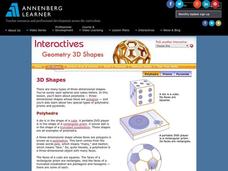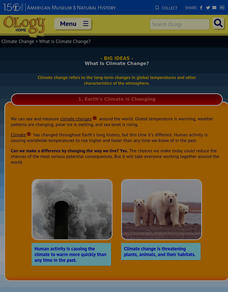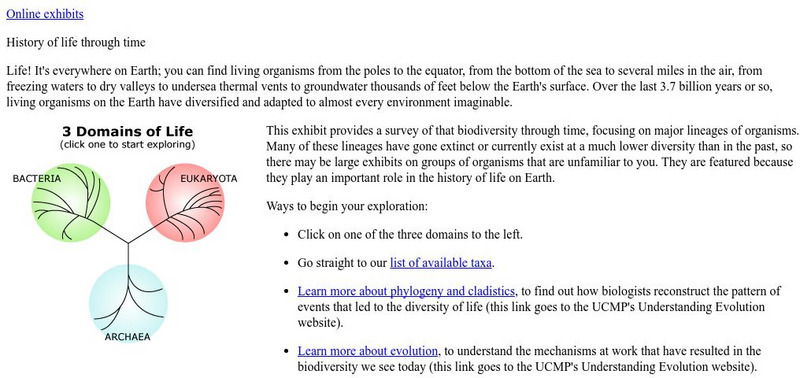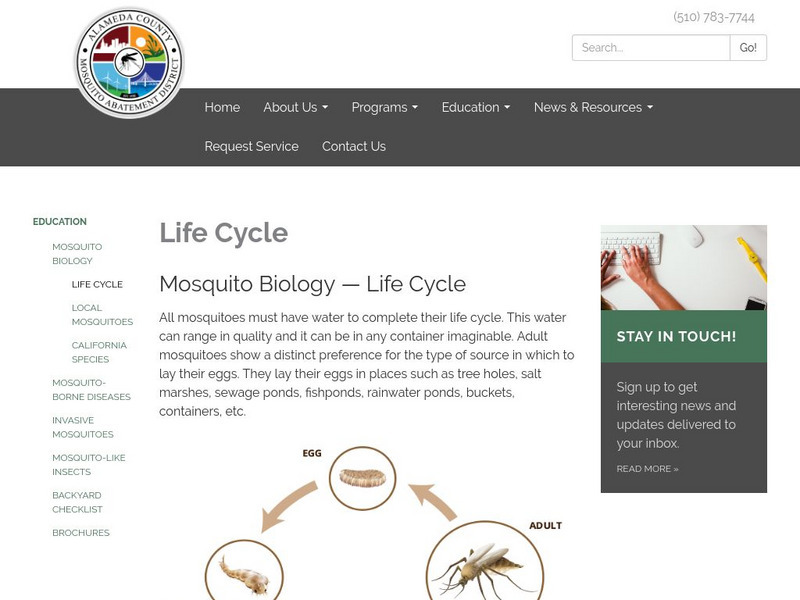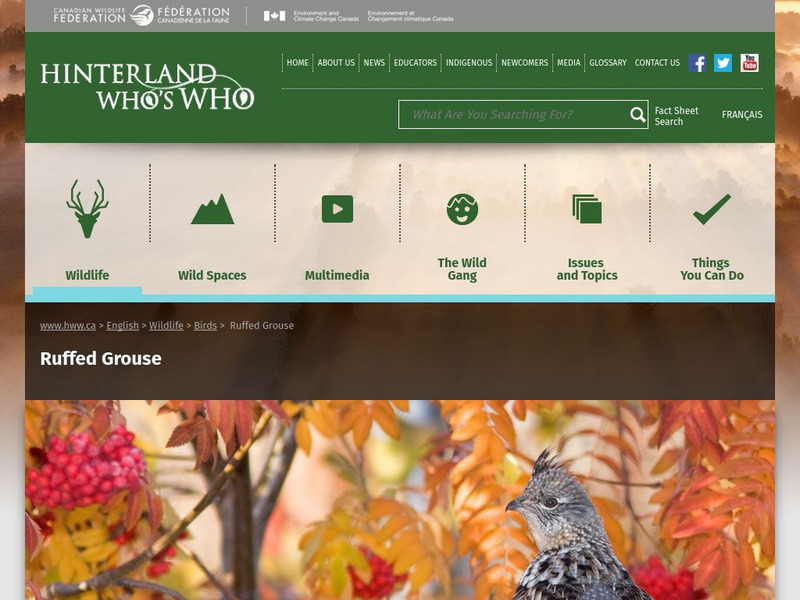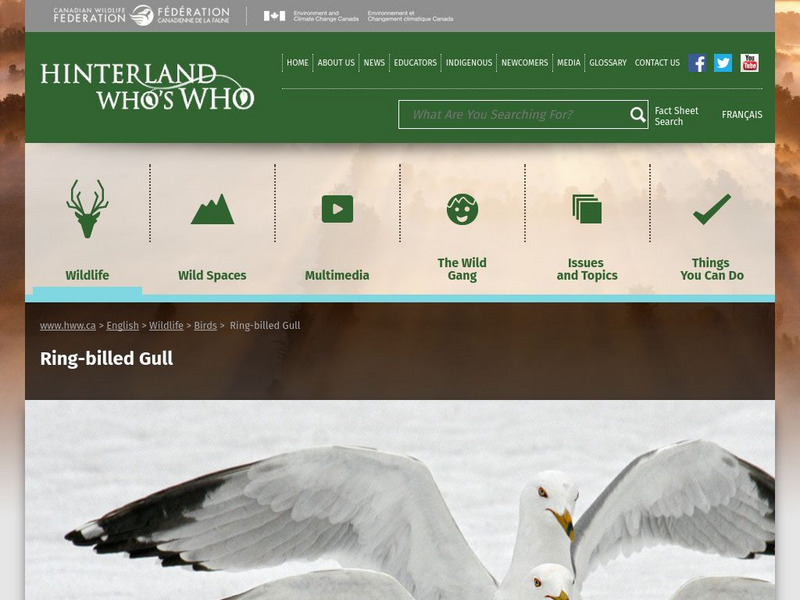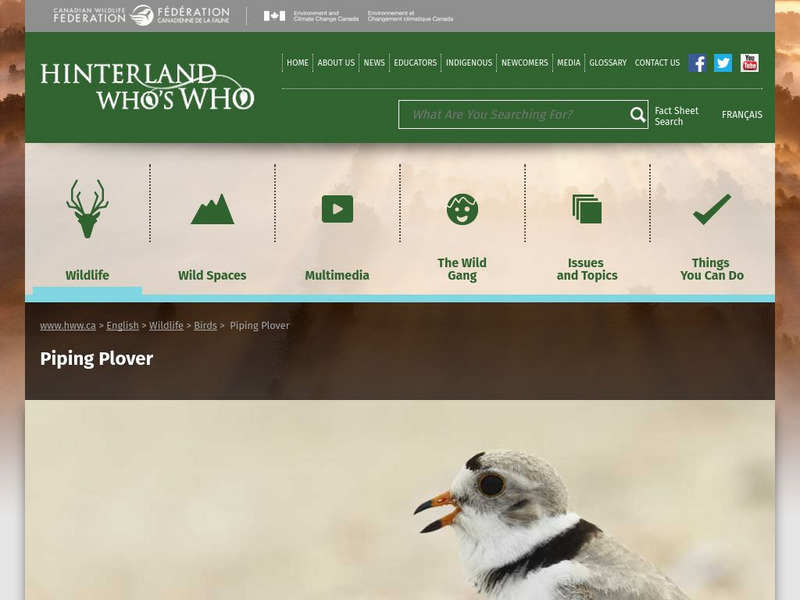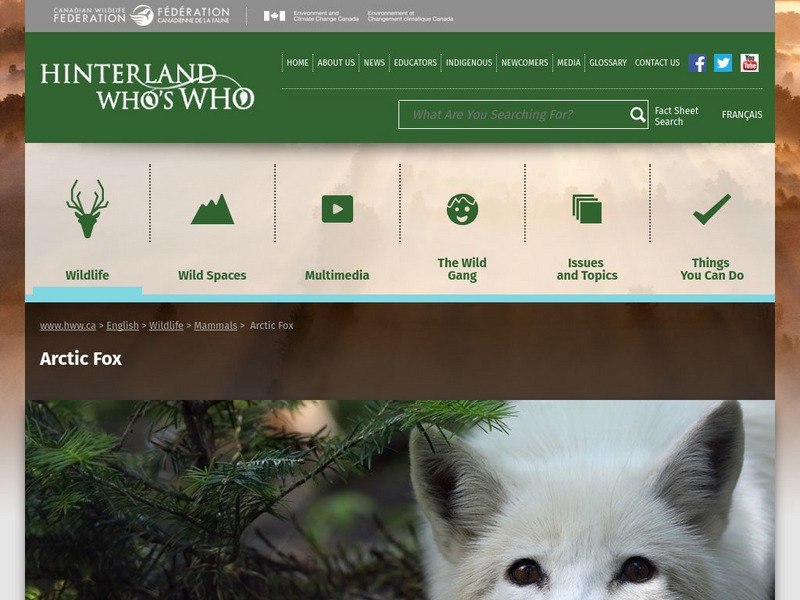American Museum of Natural History
What is Marine Biology?
A marine environment covers the majority of the earth but is arguably the least understood. Teach young scientists about the characteristics of oceans and ocean species using an interactive online lesson. The in-person or remote learning...
American Museum of Natural History
Wonderful World of Wasps
Shockingly, wasps sometimes challenge lions as the king of predators! Learners explore the life of a wasp in an interactive online lesson. They read about the characteristics of wasps and then complete activities to learn about their lives.
Annenberg Foundation
Geometry 3D Shapes: 3D Shapes
Explore vocabulary related to three-dimensional shapes. An instructional website describes the characteristics of different geometric solids. Learners can use an interactive component to view nets, faces, vertices, and edges of common...
American Museum of Natural History
Moving Mammals
How many different ways do mammals move from place to place? An online resource uses animation to show how different mammals move. Learners use a slider to speed up or slow down a variety of mammals. The versatile lesson works as a...
American Museum of Natural History
Extreme Mammals
Extreme characteristics can create some unusual mammals. Learners flip through a slide show of some of the most interesting mammals that are both living and extinct. Implement as a remote learning resource or use in-class to review...
American Museum of Natural History
What Is Climate Change?
So many factors show that climate change has arrived. Learners read through an online resource that explains the data and the consequences of climate change. They also review strategies for slowing or even reversing the global influence.
ProCon
Obesity
Is obesity a disease or just a preventable risk factor for other diseases? Scholars attempt to form their own opinions by reading a background of the issue and watching videos that explore the main pro and con arguments using an included...
PBS
Pbs Learning Media: Living and Nonliving
What is it that distinguishes a living organism from a nonliving object? This collection of images presents examples that aren't as clear-cut as one might think, enticing students to question the meaning of life.
Other
American Chemistry Council: Plastics: Lifecycle of a Plastic Product
This site provides the background on the applications of the plastics industry. General in nature, but a good look at where plastic is in your life. Gives solid factual information.
Tree of Life Project
Tree of Life Web Project: Fungi
A thorough resource providing in depth information about fungi. Find characteristics, biogeography, fossil records and more fungal data.
University of California
Ucmp: The Biosphere: Life on Earth
Learn about different forms of life that coexist with us on Earth. This Berkeley article provides links to brief write-ups on the three domains of living organisms: Eukaryota, Bacteria, and Archaea.
Other
Alameda County Mosquito Abatement: Life Cycle
A discussion on the general characteristics of the mosquito, its feeding habits, flight habits and life cyle.
Tree of Life Project
The Tree of Life Web Project
The Tree of Life Web Project contains information on living organisms including their history and characteristics. Over 3,000 web pages are linked together uniting all living things.
PBS
Pbs Learning Media: Redwoods at Redwood National Park
This video segment from NatureScene describes the characteristics of redwood trees at Redwood National Park. [4:02]
PBS
Pbs the Shape of Life: Phylum Chordata
From a PBS television series, this site offers a summary of the features which characterize the phylum chordata and includes multiple color photos.
Canadian Wildlife Federation
Hinterland Who's Who: Semipalmated Sandpiper
Get the facts about the Semipalmated Sandpiper. Besides finding a detailed physical description of this shorebird, you?ll also learn about some of its unique facts and characteristics. Also included in this Bird Fact Sheet on the...
Canadian Wildlife Federation
Hinterland Who's Who: Ruffed Grouse
Get the facts about the Ruffed Grouse. Besides finding a detailed physical description of this woodland bird, you?ll also learn about some of its unique facts and characteristics. Also included in this Bird Fact Sheet on the Ruffed...
Canadian Wildlife Federation
Hinterland Who's Who: Ring Billed Gull
Get the facts about the Ring-billed Gull. Besides finding a detailed physical description of North America?s most abundant gull, you?ll also learn about some its unique facts and characteristics. Also included in this Bird Fact Sheet on...
Canadian Wildlife Federation
Hinterland Who's Who: Piping Plover
Get the facts about the Piping Plover. Besides finding a detailed physical description of this bird, you?ll also learn about some its unique facts and characteristics. Also included in this Bird Fact Sheet on the Piping Plover is...
Canadian Wildlife Federation
Hinterland Who's Who: Arctic Fox
Get the facts about the Arctic Fox. Besides finding a physical description of Canada's smallest fox, you'll also learn about some of its unique facts and characteristics. Also included in this Mammal Fact Sheet on the Arctic Fox is...
Canadian Wildlife Federation
Hinterland Who's Who: Downy Woodpecker
Get the facts about the Downy Woodpecker, eastern North America's most common woodpecker. Besides finding a detailed physical description of the smallest member of the woodpecker family, you'll also learn about some of this bird's unique...
Canadian Wildlife Federation
Hinterland Who's Who: Marten
Get the facts about martens. Besides finding a detailed description of this woodland mammal, you?ll also learn about some of its unique facts and characteristics. Also included in this Mammal Fact Sheet on martens is information on their...
Canadian Wildlife Federation
Hinterland Who's Who: Mosquito
Get the facts about mosquito. Besides finding a detailed description of these pesky insects, you'll also learn about some of their unique facts and characteristics. Also included in this Insect Fact Sheet on mosquitoes is information on...
PBS
Pbs Learning Media: Wild Kratts: All About Lizards Lesson Plan
Students explore the diversity of lizards in terms of characteristics, behavior, and habitat. Activities feature five species of lizards and their special body structures needed for survival.


